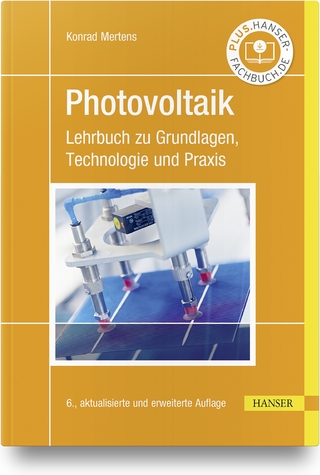Learner-Centered Teaching Activities for Environmental and Sustainability Studies
Springer International Publishing (Verlag)
978-3-319-28541-2 (ISBN)
Learner-centered teaching is apedagogical approach that emphasizes the roles of students as participants inand drivers of their own learning. Learner-centered teaching activities gobeyond traditional lecturing by helping students construct their ownunderstanding of information, develop skills via hands-on engagement, andencourage personal reflection through metacognitive tasks. In addition,learner-centered classroom approaches may challenge students' preconceivednotions and expand their thinking by confronting them with thought-provokingstatements, tasks or scenarios that cause them to pay closer attention andcognitively "see" a topic from new perspectives. Many types of pedagogy fallunder the umbrella of learner-centered teaching including laboratory work,group discussions, service and project-based learning, and student-ledresearch, among others. Unfortunately, it is often not possible to use some ofthese valuable methods in all course situations given constraints ofmoney,space, instructor expertise, class-meeting and instructor preparation time, andthe availability of prepared lesson plans and material. Thus, a major challengefor many instructors is how to integrate learner-centered activities widelyinto their courses.
The broad goal of this volume is to helpadvance environmental education practices that help increase students'environmental literacy. Having a diverse collection of learner-centeredteaching activities is especially useful for helping students develop theirenvironmental literacy because such approaches can help them connect morepersonally with the material thus increasing the chances for altering theaffective and behavioral dimensions of their environmental literacy. Thisvolume differentiates itself from others by providing a unique and diversecollection of classroom activities that can help students develop theirknowledge, skills and personal views about many contemporary environmental andsustainability issues.
Dr. Loren Byrne is an Associate Professor of Biology & Environmental Science and served as the first Coordinator of the Sustainability Studies Program at Roger Williams University.
Introduction.- Which is Most Sustainable? Using Everyday Objects to Examine Trade-offsamong the "Three Pillars" of Sustainability.- An Introduction to SystemsThinking using Plastic Dinosaurs.- An Introductory Examination of Worldviewsand Why They Matter For Environmental and Sustainability Studies.- BuildingResilience: Modeling Resilience Concepts Using Legos.- Eco-Crimes andEco-Redemptions: Discussing the Challenges and Opportunities of Personal Sustainability.-Engaging with Complexity: Exploring the Terrain of Leadership forSustainability.- Discovering Authentic Hope: Helping Students Reflect onLearning and Living with Purpose.- Teaching How Scientific Consensus isDeveloped through Simplified Meta-analysis of Peer-reviewed Literature.- UnderstandingEcosystems and Their Services through Apollo 13 and Bottle Models.- Using SoilOrganisms to Explore Ecosystem Functioning, Services, and Sustainability.- Fire,Pollution and Grazing, Oh My! A Game in which Native and Invasive PlantsCompete under Multiple Disturbance Regimes.- Exploring Trophic Cascades in LakeFood Webs with a Spreadsheet Model.- Ants, Elephants, and Experimental Design:Understanding Science and Examining Connections between Species Interactionsand Ecosystem Processes.- Teaching Lyme Disease Ecology Through aPrimary-Literature Jigsaw Activity.- A Fisheries Activity to Examine theTragedy of the Common Goldfish Cracker.- Making Biodiversity StewardshipTangible using a Place-based Approach.- Conservation Triage: Debating WhichSpecies to Save and Why.- Everything Cannot Be Equal: Ranking Priorities andRevealing Worldviews to Guide Watershed Management.- Location, Location,Location! Analyzing Residential Development in Environmentally-Fragile Areas.- TastingSustainability: Using Multi-sensory Activities to Retune Food Preferences.- Relationshipsbetween Consumption and Sustainability: Assessing the Effect of Life CycleCosts on Market Price.- Business Sustainability and the Triple Bottom Line:Considering the Interrelationships of People, Profit, and Planet.- ATriple-Bottom-Line Analysis of Energy Efficient Lighting.- Go with the Flow:Analyzing Energy Use and Efficiency in the U.S.- Exploring Complexities ofEnergy Options through a Jigsaw Activity.- Introducing the Conflicting Meaningsof "Justice" Using a Candy-distribution Exercise.- Beyond Band-Aids: UsingSystems Thinking to Assess Environmental Justice.- Engaging the EmpathicImagination to Explore Environmental Justice.- Helping Students EnvisionJustice in the Sustainable City.- Social-ecological Systems Mapping to EnhanceStudents' Understanding of Community-Scale Conflicts Related to IndustrialPollution.- The Skies, the Limits: Assessing the Benefits and Drawbacks ofTighter U.S. Soot Emission Standards.- Don't Blame the Trees: Using Data toExamine how Trees Contribute to Air Pollution.- Evaluating the Effectiveness ofGreen Roofs: A Case Study for Literature Research and Critical Thinking.- TheStory of Source Reliability: Practicing Research and Evaluation Skills Using"The Story of Stuff" Video.- Critically Evaluating Non-scholarly Sourcesthrough Team-Based Learning.- Using the Insights, Questions and Challenges(IQC) Framework to Improve Students' Environmental Communication Skills.- BuildingStudents' Communication Skills and Understanding of Environmental andSustainability Issues Interactively and Cumulatively with Pecha KuchaPresentations.- Engaging in Climate Change Conversations: A Role-PlayingExercise to Cultivate Effective Communication.- Writing Letters to the Editorto Promote Environmental Citizenship and Improve Student Writing.- CaptioningPolitical Cartoons from Different Perspectives as a Tool for Student Reflection.-Analyzing Nature as a Persuasive Tool in Advertisements.- Making and AssessingArt in the Sustainability Classroom.
| Erscheinungsdatum | 08.10.2016 |
|---|---|
| Zusatzinfo | XX, 322 p. 3 illus. |
| Verlagsort | Cham |
| Sprache | englisch |
| Maße | 155 x 235 mm |
| Themenwelt | Naturwissenschaften ► Biologie ► Ökologie / Naturschutz |
| Naturwissenschaften ► Geowissenschaften | |
| Sozialwissenschaften ► Politik / Verwaltung | |
| Schlagworte | Earth and Environmental Science • environmental literacy • higher education • Interdisciplinary • learner-centered teaching • Learning & Instruction • Learning and Instruction • Learning & Instruction • Literacy • science education • sustainability studies • sustainable development • Teaching Tool |
| ISBN-10 | 3-319-28541-6 / 3319285416 |
| ISBN-13 | 978-3-319-28541-2 / 9783319285412 |
| Zustand | Neuware |
| Haben Sie eine Frage zum Produkt? |
aus dem Bereich




